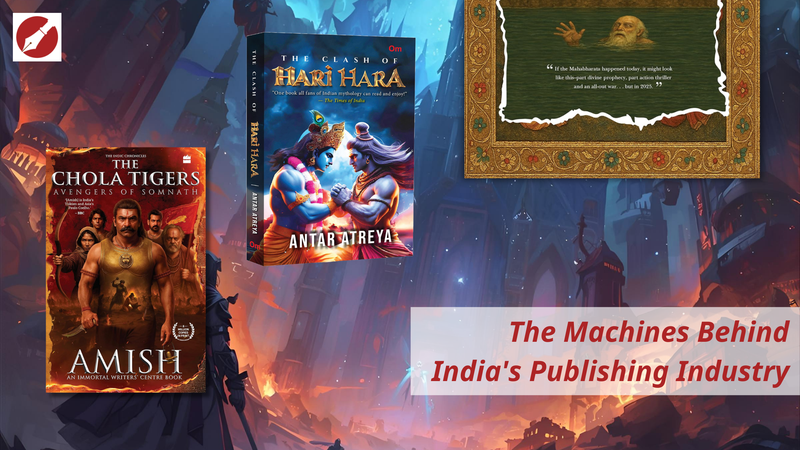To sue an AI company over copyright infringement while using AI for your own book covers: is this hypocrisy or strategy? Even as the Federation of Indian Publishers battles OpenAI in Delhi courts, artificial intelligence is ghostwriting blurbs, creating marketing texts, generating promotional reels, and crafting the very covers that get on bestseller lists. The “revolution” isn't coming. It's already here and operating under the guise of creative agencies and "AI artists."
This summer's flashpoint came with Amish Tripathi's The Chola Tigers: Avengers of Somnath. Across his official Instagram, multiple launch posts explicitly credited "AI production: Vertex Volt AI". What the posts didn't clarify is how the cover itself was a product of algorithms. Readers and designers have dissected the artwork, pointing to telltale signs, from anatomical inconsistencies to that peculiar sheen that marks machine-generated imagery.
That lack of accountability makes sense. Because if one of India's most successful authors, the man who created the fastest-selling series in Indian publishing history, can launch a book with AI-assisted marketing, what does that tell us about industry standards?
Speed at Any Cost
Indian publishers operate on thin margins and compressed timelines. Add to that the constant demand for content to perform on social media algorithms. In that situation, AI offers a tempting solution which human creativity cannot: speed at scale, that too with costs slashed.
It can “create” five cover alternatives before a human designer even sketches a single line.
It can “produce” blurbs tuned perfectly for Amazon India's search algorithms in seconds.
Videos and reels can be “built” without the expense or delay of location shoots and actors.
The evidence is aplenty. Pratilipi Comics publicly described moving to an AI-assisted workflow, cutting episode turnaround from ten days to two, with human artists only handling the cleanup.
StoryMirror launched an AI Book Cover Generator, offering point-and-click design for indie authors and small presses. Pocket FM, an Indian-founded audio fiction platform, has an in-house tool, “Copilot,” which can suggest different narrative turns, review content, translate and adapt serialized fiction across languages. Its parent company has an AI-powered comics platform (Pocket Toons) that turns prose into comics 21 times faster than a traditional art team.
These modifications (obviously!) come alongside massive layoffs and diminishing returns for its creators, with the company facing multiple lawsuits in California over employment violations.
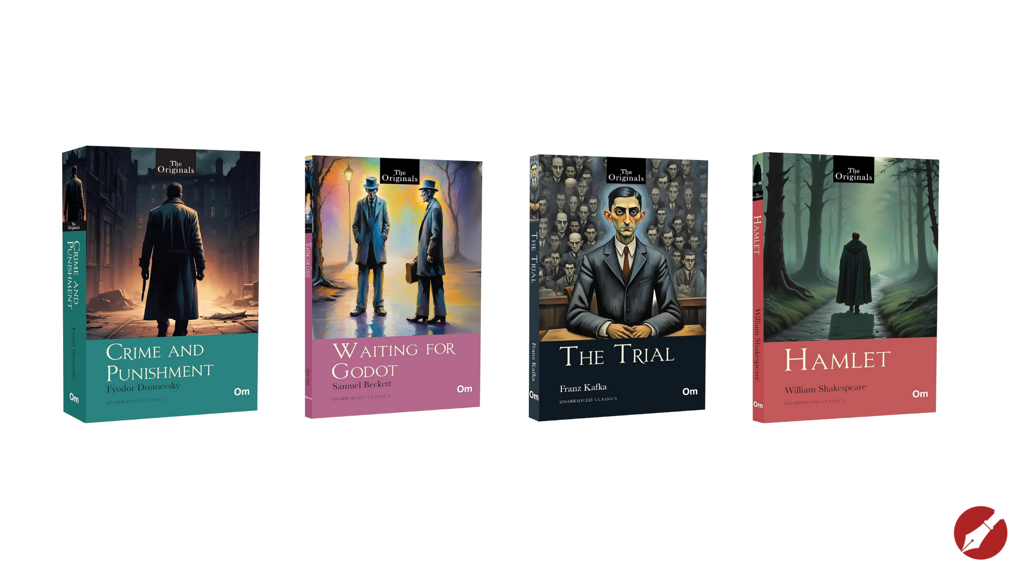
Om Publishers (one of the biggest publishers of classics in India with a massive chain of bookstores) seems to have switched to AI art for covers entirely (some examples attested above).
Recently, the Indian author Gourav Mohanty called out this trend of increasing usage of AI and the lack of accountability and outrage among readers and journalists.
The broader international industry, too, has shown similar trends. Publishers now use AI for metadata optimization, email campaigns, social media management, and the blurbs that appear on everything from Amazon to Flipkart. The marketing emails I’ve received in the past year (and beyond) from publishers are largely copy-pasted from generative tools.
HarperCollins CEO has publicly discussed experimenting with AI for producing translated books and audiobooks. The publisher has also allowed tech firms to use some of its titles to be used to train AI models.
Tor/Bramble (Macmillan) also caught heat for AI-generated elements in the cover of Gothikana. And this wasn’t even the first time, as the publisher had done the same thing with Christopher Paolini's sci-fi novel, Fractal Noise.
Last year, the startup Spines announced that it would publish 8000 books by using AI for proofreading, designing and distributing titles and streamlining the process.
It goes on and on and on.
The Authenticity Gap
But speed comes with a cost, and that cost is texture.
Let’s take an Indian context. AI systems are trained primarily on English-language datasets. This means that they often exoticize or outright misrepresent Indian contexts when prompted. Research confirms what is visible to most: that generative systems struggle with the lived knowledge of human artists. How a Banarasi silk drapes differently from Kanjivaram. How henna stains deepen on different skin tones. To expect machines trained on Wikipedia entries to grasp these textures is to mistake information for intimacy.
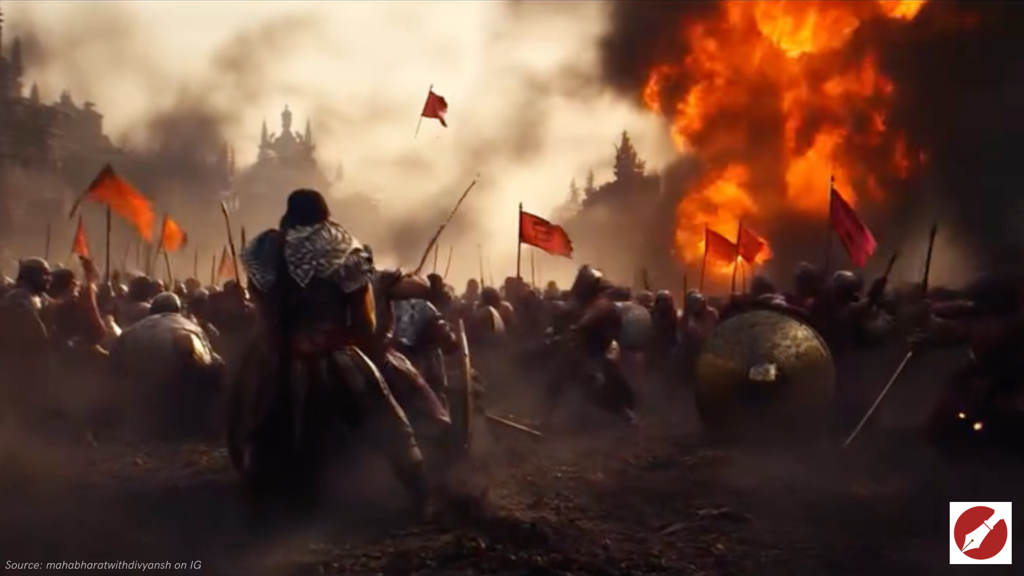
This is why Tripathi's Chola Tigers controversy matters beyond one book. When AI generates "epic fantasy" imagery, it defaults to a composite aesthetic that flattens cultural specificity into algorithmic approximation. The result may feel familiar, but it also feels wrong, thanks to faces that blend regional features into a generic "Indian" template.
What gets erased in this process is the authority of lived experience. An illustrator familiar with local contexts can bring knowledge that no dataset can replicate. When that knowledge is replaced by algorithms, readers lose something they might not even be able to name, i.e., the feeling that a story is rooted in a place, told by someone who belongs to it.
Freelance designers have reported a noticeable drop in demand within the freelance service industry as clients turn to AI alternatives. World Economic Forum’s Future of Jobs Report 2025 notes graphic design to be one of the fastest declining jobs.
The concern extends beyond immediate job displacement to a normalization of mediocrity. When publishers accept algorithmic approximation over human expertise, when "good enough" becomes the standard, quality becomes something negotiable, something to be ignored, something to be trampled over repetitively.
The Vanishing Artist
But the question remains, why are publishers reaching for AI tools with such eagerness? Isn’t this supposed to be one of the most creative industries among all?
The answer rests in the mathematics of modern publishing:
- India's frontlist is crowded
- Midlist titles don't get big design budgets
In this scenario, AI almost erodes the case for commissioning illustrators on routine projects. To keep that treadmill of constant content creation running, publishers often choose the easy route out.
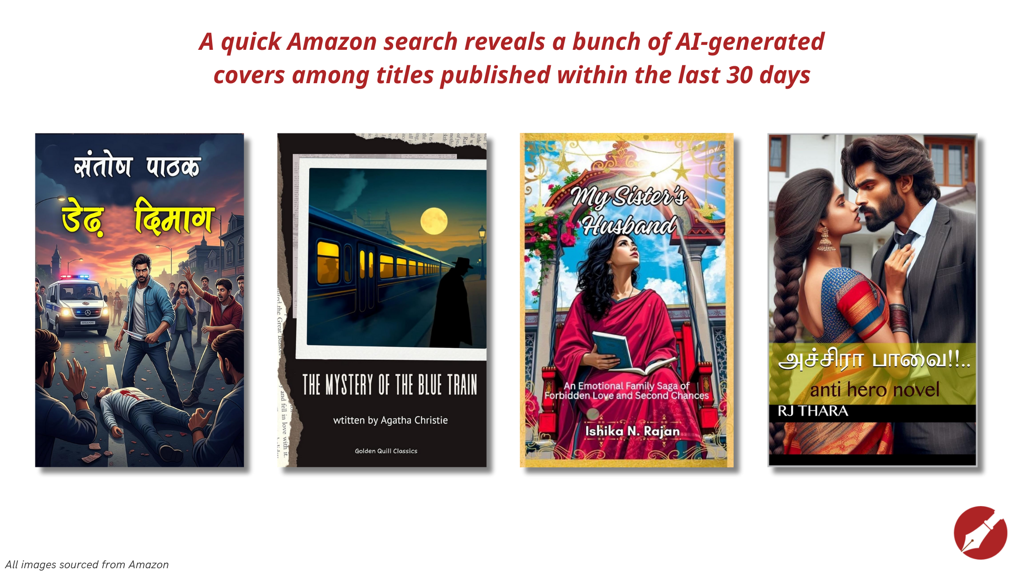
But the human cost comes with more than lost commissions. Cover artists, translators, especially those outside metros, lose the entry-level briefs that once paid bills while they built portfolios. Marketing copywriters continually find their services condensed into “prompt engineering”. Social media specialists become curators of machine-generated content rather than creators of original, clever campaigns.
This creates the future scenario of a feedback loop where AI-generated content trains readers to expect a certain aesthetic and tone, which in turn makes human creativity seem "off-brand" by comparison. India's content economy is projected to grow from $30 billion to $480 billion by 2035, but the more important question here is whether that growth will fund human creativity or algorithmic efficiency.
The Double Life of Publishers
The irony is that the same publishers who file lawsuits against OpenAI for training on unlicensed books are simultaneously experimenting with AI tools downstream. On one hand, they seek to protect intellectual property. At the same time, on the other hand, they seek to exploit efficiency gains using those same intellectual properties. This creates a PR minefield that few publishers are prepared to navigate.
Globally, this tension has already exploded into embarrassing headlines. Penguin Random House prints "no AI training" clauses on copyright pages while its UK arm apologizes to authors for AI imagery in promotional materials. The message is quite clear here: we'll control how AI uses our content, but we reserve the right to use AI for our operations.

Indian publishers, of course, have gleefully inherited this playbook. Federation of Indian Publishers and global houses operating in India are suing OpenAI in Delhi, arguing that AI systems trained on unlicensed books harm their businesses. Yet, at downstream touchpoints (ads, blurbs), AI is rampant. “Protecting our IP” today goes hand in hand with “use AI to market that IP cheaply.”
AI Critic, AI Beneficiary
Tripathi's public statements about AI add further irony to this story. During the Vahani Scholarship Trust Summer Workshop, he emphasized that "writers need to come up with fresh and creative ideas to compete" with AI's growing capabilities. He acknowledged using AI for his own research but simultaneously warned that it is evolving from an assistant to a competitor.
This presents a fascinating paradox, doesn’t it? An author who publicly discusses AI as a creative threat is potentially benefiting from AI-generated materials. This further highlights the industry's ongoing struggle to balance efficiency gains with creative integrity.
However, this paradox may extend beyond individual choice. When Tripathi warns that writers must stay ahead of AI, he's speaking to the creative core of literature. But when his publishers are using AI for promotional materials, they're operating in a different sphere entirely, one where creativity is secondary to reach and cost control.
The two conversations may not always intersect, which means even authors sometimes discover their books' AI-assisted marketing campaigns alongside their readers.
Algorithmic Dependence
What makes this transformation particularly dangerous is its accumulative nature. There aren’t any theatrical announcements or any industry-wide policy changes. Rather, AI enters the publishing ecosystem incrementally through small compromises. A blurb here, a social media post there.
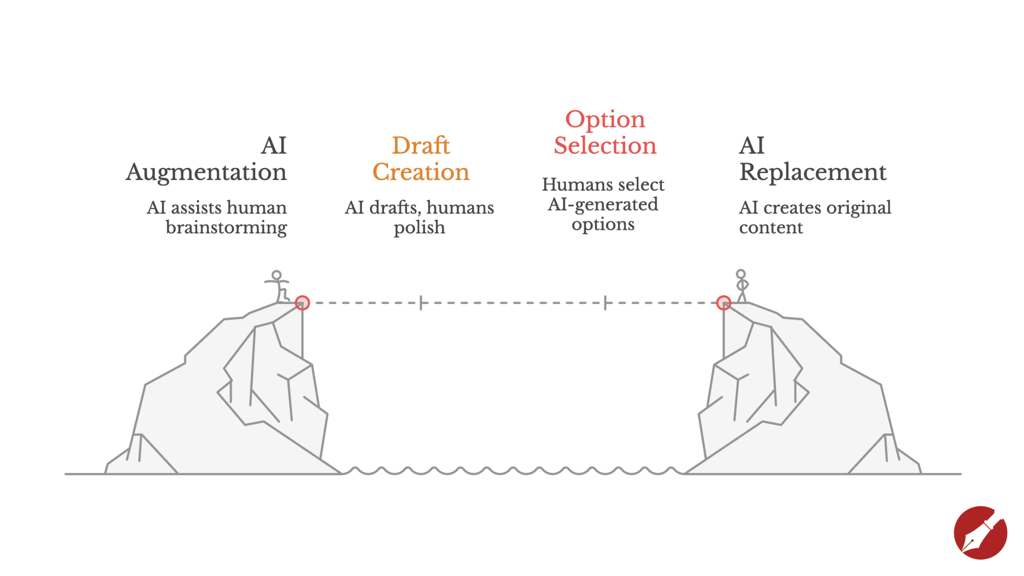
The normalization process follows a predictable pattern. AI starts as the brainstorming buddy "just to get ideas flowing." Soon, it begins writing the drafts, with humans doing the "final polish." In no time, the human involvement becomes mere cosmetics, as they stop polishing and start selecting from AI-generated options. The creator becomes a curator becomes a consumer. So it is that what begins as augmentation becomes replacement, often without anyone making a conscious decision to cross that line.
It’s a sure-shot method for creative industries to die by gradually accepting "good enough" over excellence, convenience in place of craft.
Drawing Lines in this Digital Sand
The solution isn't to ban AI. That ship has sailed long ago (goodbye!) across the oceans of the global publishing industry. Also, to set further context, for “computer-generated” works, India’s Copyright Act states that the author is “the person who causes the work to be created.” Thus, authorship is pinned on the one who “orchestrates” the creation. In practice, that could be the publisher or the person directing the prompts, depending on contracts.
But why can’t Indian publishers still establish standards that preserve what matters most? The guardrails don’t even need to be technically complex or prohibitively expensive:
1. Label the pipeline.
If a cover, poster, or promotional reel includes AI-generated elements, say so. Credit both the AI tools used and the human editors who refined the output. Credit to Tripathi's team for atleast doing this on their Instagram posts, for that transparency should become industry standard rather than an exception.
2. Create an "Indian illustration minimum."
Atleast for historical and culture-forward books, make sensitivity passes by Indian artists familiar with the cultural contexts necessary. If AI generates initial concepts, mandate human redraws for scripts, iconography, etc. Some comics publishers already do this post-AI cleanup; codify it across the industry.
3. Experiment at the edges.
Draw bright lines: no AI for manuscript prose, back-cover copy, or jacket art without explicit disclosure and editorial sign-off.
4. Pay artists at scale.
Establish rapid-response micro-commissions for launch-week spot art so midlist titles still fund the creative ecosystem. AI can draft concepts, but money should circulate to humans who bring cultural knowledge and lived experience to the final execution.
5. Align practice with principle.
Publishers joining anti-AI litigation should audit their own operations. If you're arguing that AI training violates copyright, ensure your marketing materials don't rely on potentially infringing outputs.
The Stories We Choose to Tell
Indian publishing stands at a crossroads between adopting efficiency and preserving the human creativity that grounds stories in specific contexts.
The Society of Authors (UK) advises clauses that forbid licensing any part of an author’s work for ML training without explicit, specific consent. In the US, the Authors Guild added AI clauses to its model contracts (covering book covers, translations, audiobook narration) and is rolling out a “Human Authored” certification. Major publishers are now adding “no AI training without permission” language on request.
Bonnier Books has published a transparent AI policy with no training use of its publications, and clear disclosure when generative tools are used in-house. Hachette Book Group maintains a public AI FAQ, spelling out permitted internal uses and annexes that authors can consult.
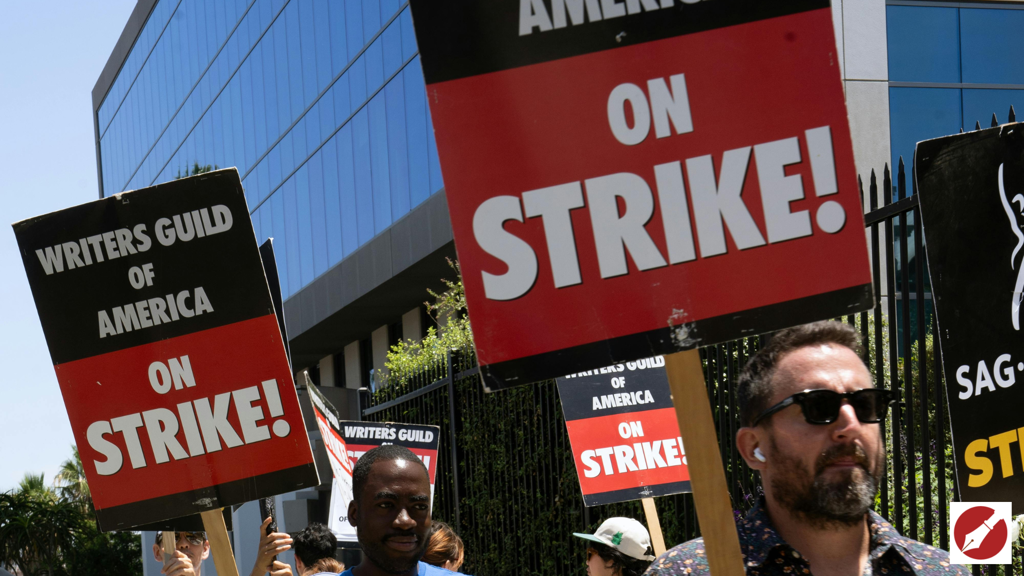
And how can one forget the 2023 strikes by the Writers Guild of America (WGA)? Over 148 days, writers protested against Hollywood studios on multiple issues, including protection against generative AI, leading to improved conditions and new clauses.
The publishers who navigate this thoughtfully will likely emerge as leaders in a completely altered industry. But the stakes go beyond individual companies or even the publishing industry itself. India's literary ecosystem works on frugal ingenuity, on finding creative solutions within tight constraints. That ingenuity can very much be preserved while losing the opacity that currently shrouds AI adoption.
Publishers don't need to ban AI to be ethical, but rather be specific about where it's allowed and who gets paid.
Technology has the potential to disrupt creative industries. Before long, the exception can become the rule as readers find themselves in a world completely transformed.
The Future Is Being Written Now
When AI can generate covers in seconds and blurbs that trend on social media, what becomes of the human stories that require years to write? What happens to the cultural specificity, the lived experience that makes Indian literature distinctly Indian rather than merely literature that happens to be published in India?
These questions matter because books are not mere products. Books are not mere shelf displays. They’re conversations between writers and readers, mediated by everyone who shapes how stories reach their audience. When algorithms start writing those conversations, we lose something essential. We lose the sense of literature emerging from human experience.
The future is being written now, whether in Instagram captions or publishers' clauses. The future is being written in the choices made when deadlines are looming above you and budgets are tightening. Whether that future preserves the soul of Indian publishing or surrenders it to algorithms depends on the standards we establish today.
The watermark may be invisible, but the mutation is irreversible.
The question that remains is whether we'll choose to see it before it's too late to change course.

